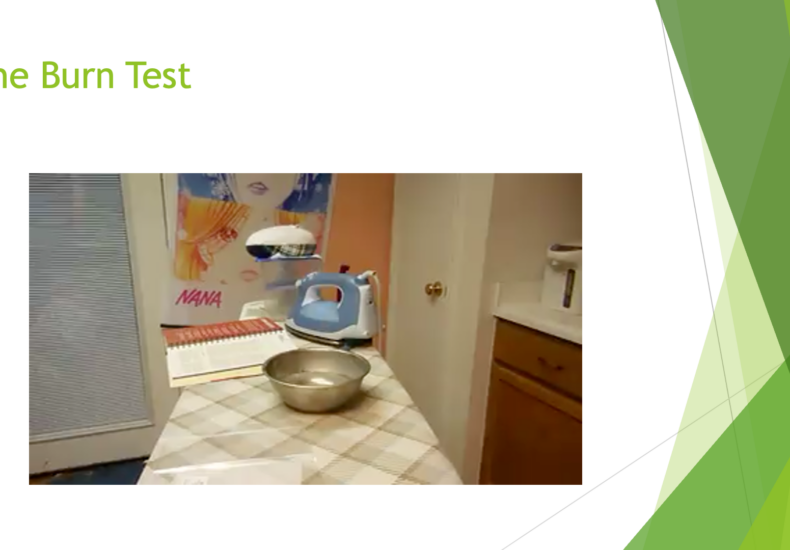
Written by LiccaAugust 1, 2025
More than Satin: Fabric Properties
Panel Slides . Tips and Tricks Article
I wrote this panel in response to what I consider to be incomplete information when discussing fabric. By talking about what makes a cut a fabric the specific kind of fabric it is, you get a more complete picture on what the fabric is, and are able to make better purchasing decisions. In this panel, which I presented at Ushicon several years ago, I cover:
- Raw materials types used to make fabric
- The way material can be arranged to make fabric
- The burn test and how to safely do it
- The value of mixing materials in a fabric blend
- Laminating fabric to make any fabric act like any other fabric
- Choosing the right needles
- How to effectively buy fabric online
I recommend two specific books in this panel:
- All New Fabric Savvy, by Sandra Betzina
- Sew Any Fabric, by Claire Shaeffer
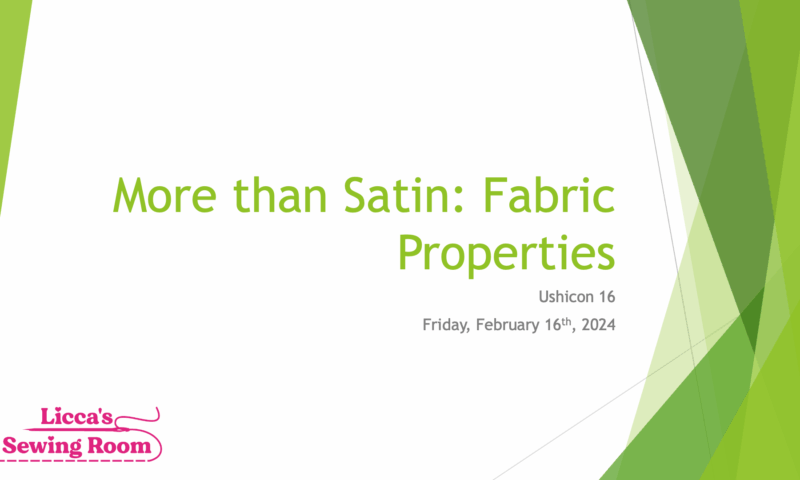 Title slide. This was presented last year at Ushicon.
Title slide. This was presented last year at Ushicon.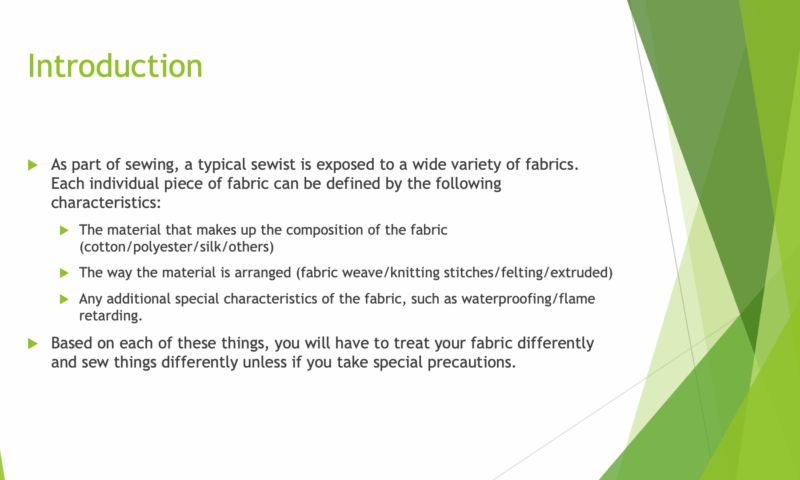 I developed this panel as I was tired of dealing with incomplete information when it comes to discussing and buying fabrics. Knowing more about your fabric is key to having a successful sewing project.
I developed this panel as I was tired of dealing with incomplete information when it comes to discussing and buying fabrics. Knowing more about your fabric is key to having a successful sewing project.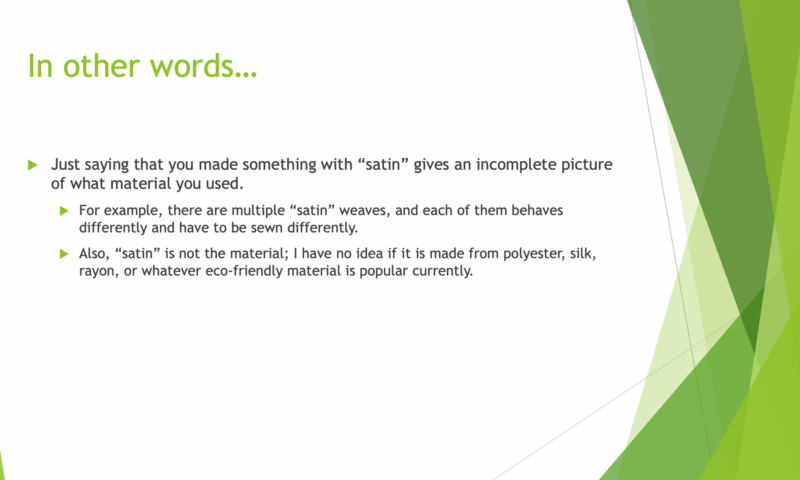 Admittedly, saying a piece of fabric is "satin" is probably my biggest sewing pet peeve. Saying that means gives so little information about your fabric.
Admittedly, saying a piece of fabric is "satin" is probably my biggest sewing pet peeve. Saying that means gives so little information about your fabric.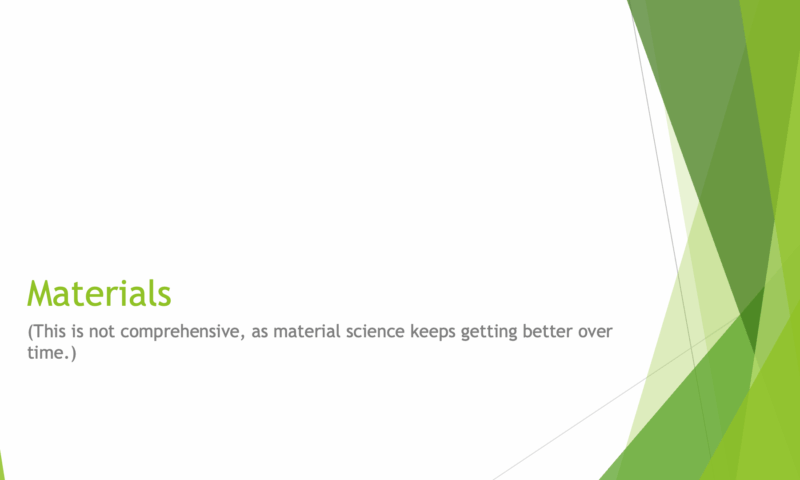 Material science just keeps getting more advanced every year; fabric has become so much more sophisticated in terms of material compared to even 20-30 years ago!
Material science just keeps getting more advanced every year; fabric has become so much more sophisticated in terms of material compared to even 20-30 years ago!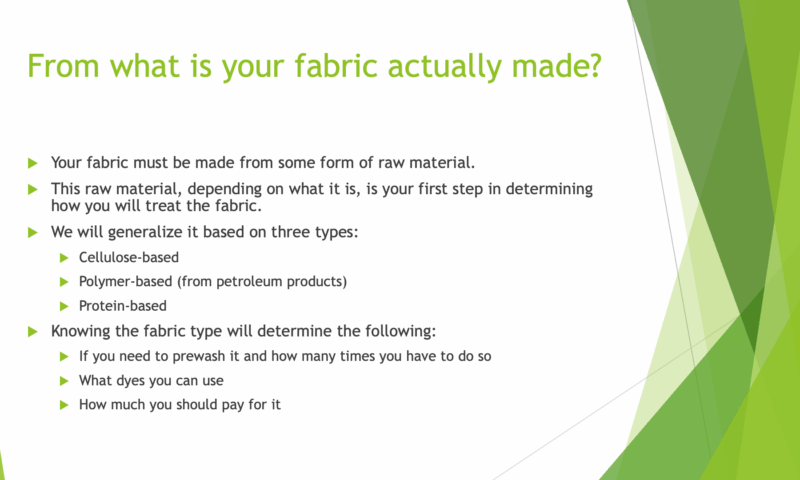 Even though fabric can be made with so many materials, the materials can be divided into three distinct categories: cellulose-based, polymer-based, and protein-based. The raw materials alone have the biggest impact in the cost of the material.
Even though fabric can be made with so many materials, the materials can be divided into three distinct categories: cellulose-based, polymer-based, and protein-based. The raw materials alone have the biggest impact in the cost of the material.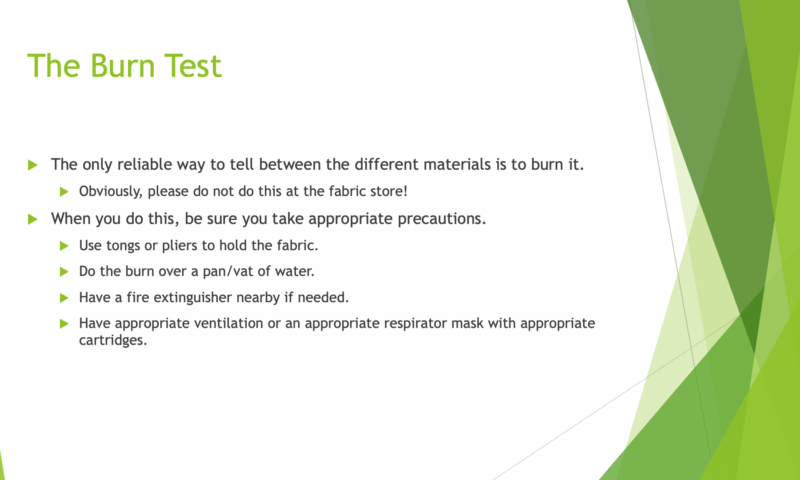
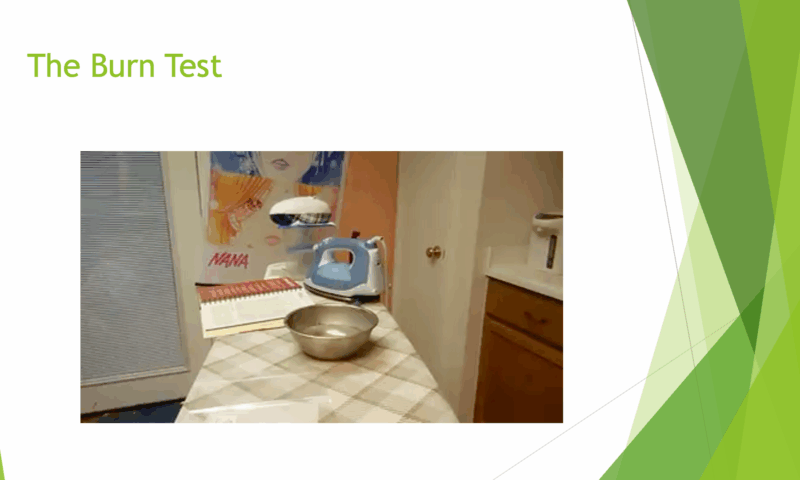
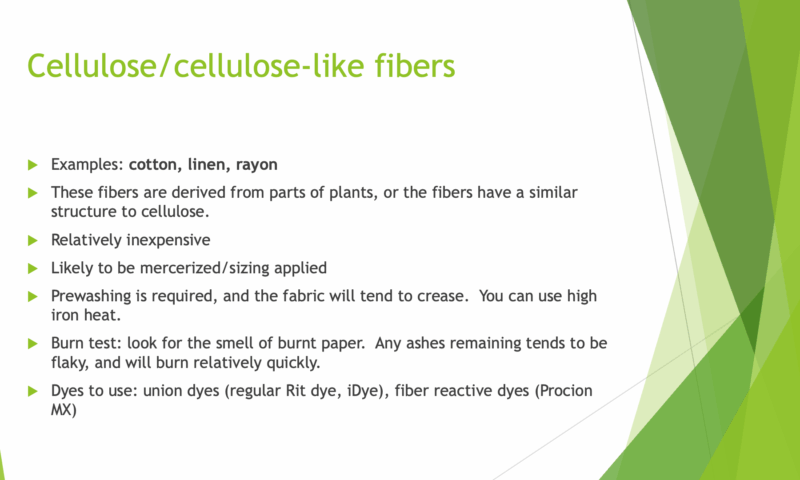

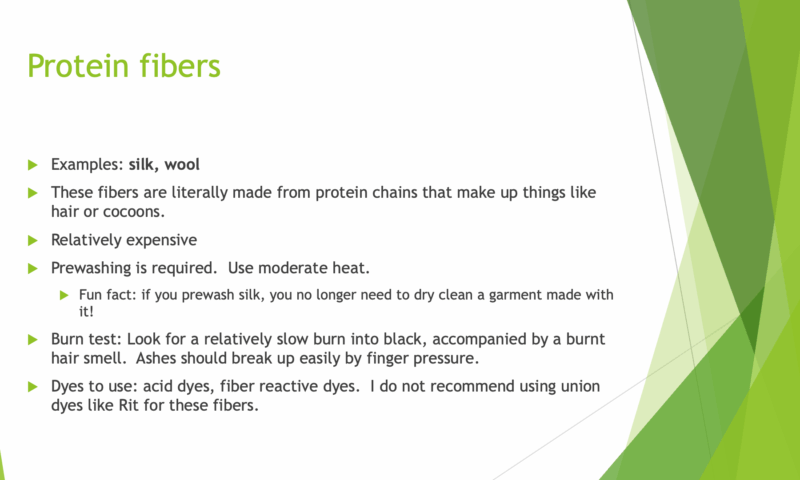
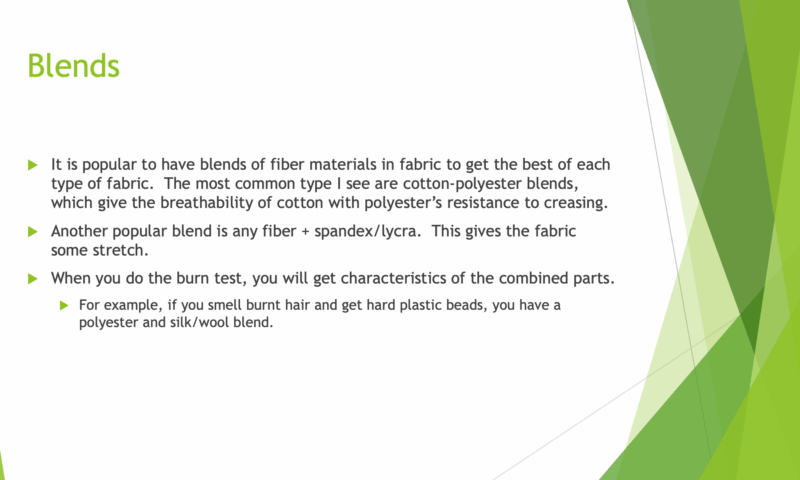 One thing I want to mention is that it does not take much of a blend component to get what you want. I have some silk charmeuse that has a little bit of spandex blended in, and it stretches quite nicely.
One thing I want to mention is that it does not take much of a blend component to get what you want. I have some silk charmeuse that has a little bit of spandex blended in, and it stretches quite nicely. The way the material is arranged is quite fascinating, and science can explain why materials behave differently if arranged differently.
The way the material is arranged is quite fascinating, and science can explain why materials behave differently if arranged differently.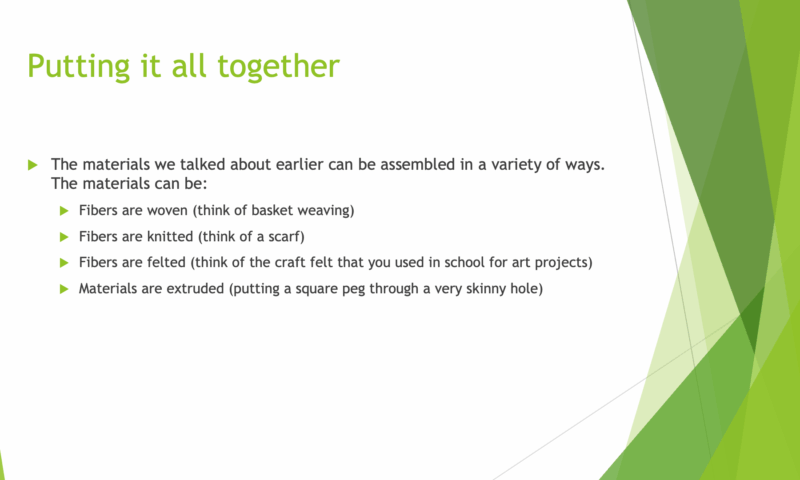 The inherent structure of materials in fabric contributes heavily to how it acts and feels.
The inherent structure of materials in fabric contributes heavily to how it acts and feels.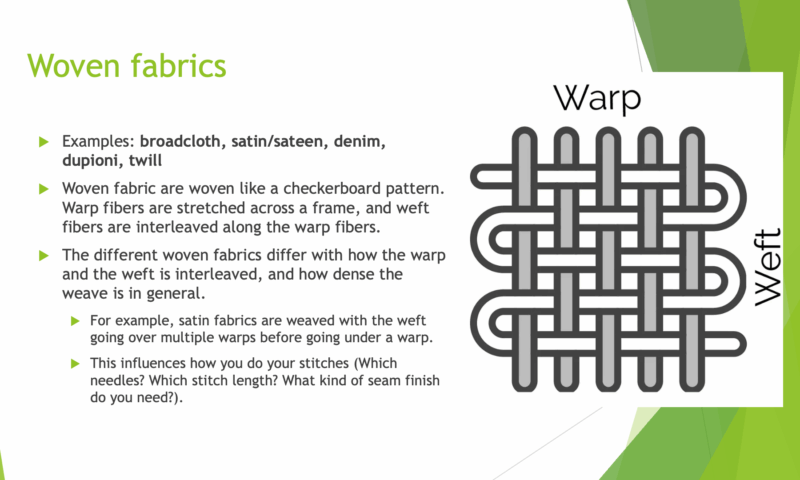 A satin weave (when most people talk about "satin", that is what they are talking about) consists of skipping multiple warps to create a smoother finish. This also explains why satin fabrics tend to shred a lot more on the raw edges: the fabric itself isn't as secure in the weft direction.
A satin weave (when most people talk about "satin", that is what they are talking about) consists of skipping multiple warps to create a smoother finish. This also explains why satin fabrics tend to shred a lot more on the raw edges: the fabric itself isn't as secure in the weft direction.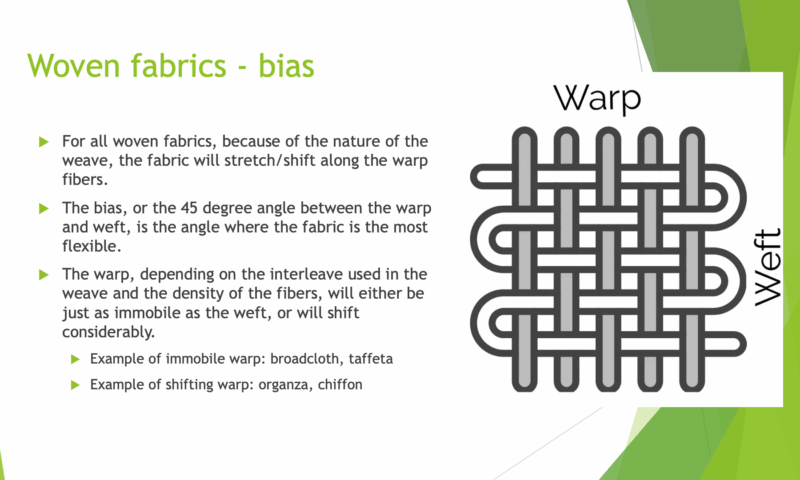 Bias on a woven fabric is a very powerful tool to make clothes fit the way they are supposed to fit.
Bias on a woven fabric is a very powerful tool to make clothes fit the way they are supposed to fit.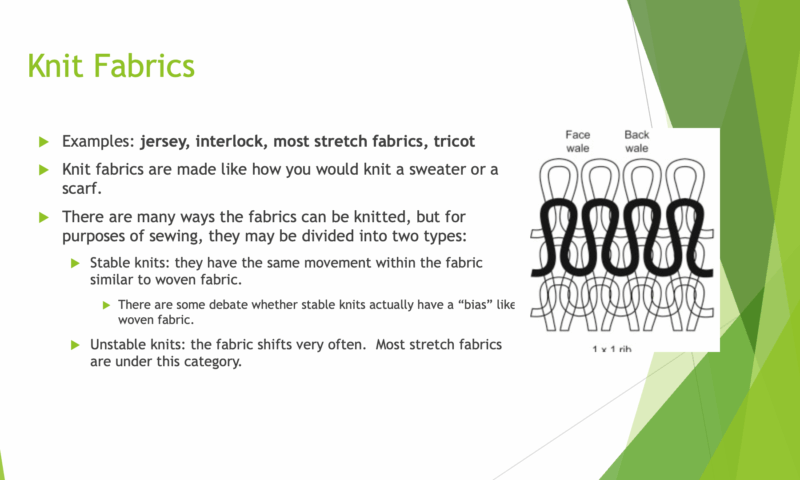 One thing of note (which will be covered later): there is debate on whether knits have a bias similar to woven fabrics.
One thing of note (which will be covered later): there is debate on whether knits have a bias similar to woven fabrics.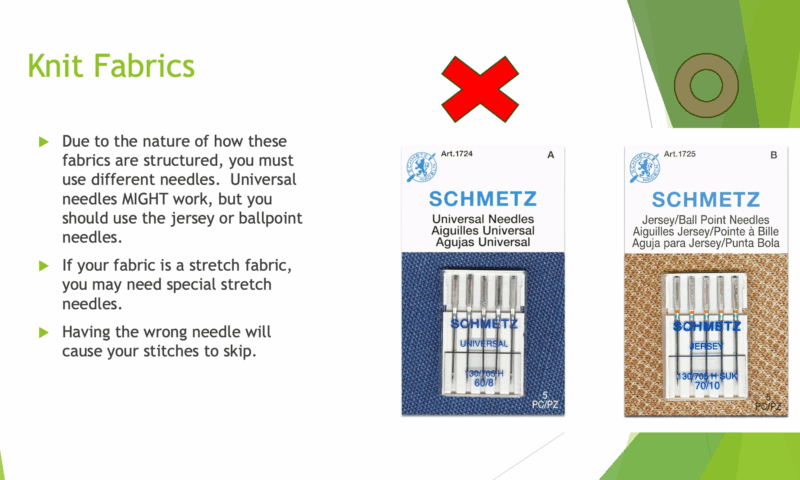 Also be careful of needles that aren't what they say they are! (I once had stretch twin needles that were not stretch needles, and I was skipping stitches.)
Also be careful of needles that aren't what they say they are! (I once had stretch twin needles that were not stretch needles, and I was skipping stitches.)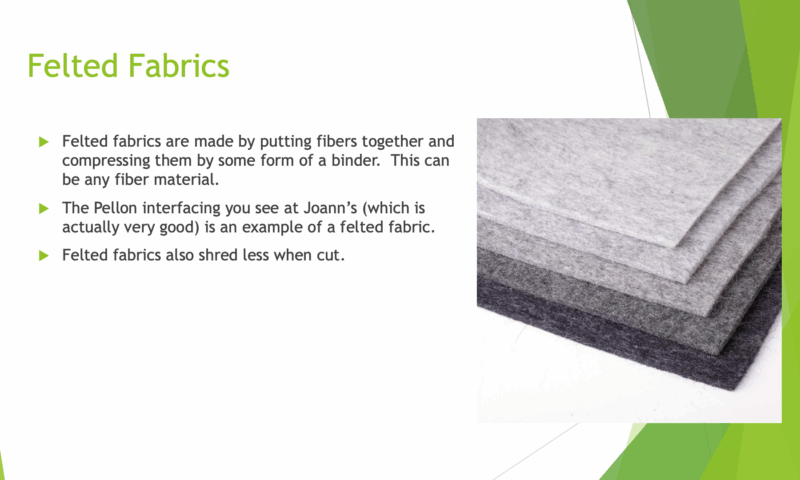 Felted fabrics are also often used as part of recycling fabrics into new forms!
Felted fabrics are also often used as part of recycling fabrics into new forms!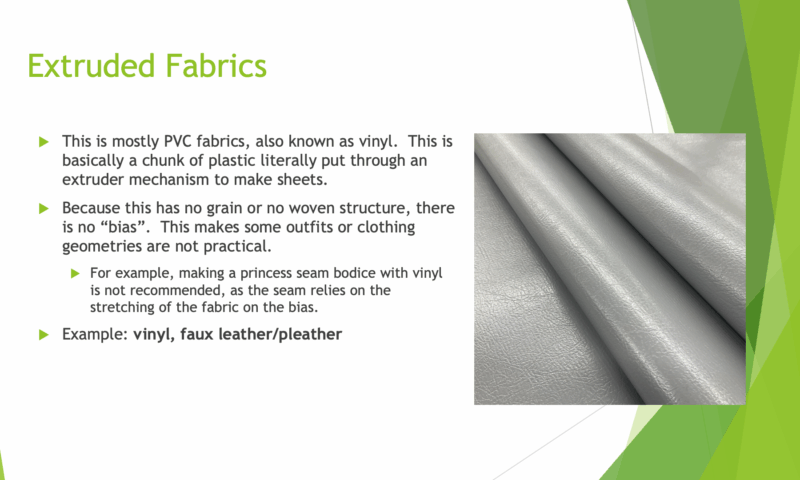 When I am talking about extruded fabrics, I am talking about the entire fabric extruded as one piece. Technically, synthetic fibers such as polyester are extruded fibers, but for my purposes, they are not extruded fabrics like sheets of vinyl.
When I am talking about extruded fabrics, I am talking about the entire fabric extruded as one piece. Technically, synthetic fibers such as polyester are extruded fibers, but for my purposes, they are not extruded fabrics like sheets of vinyl. This section I wanted to summarize some general advice based on what I presented earlier.
This section I wanted to summarize some general advice based on what I presented earlier.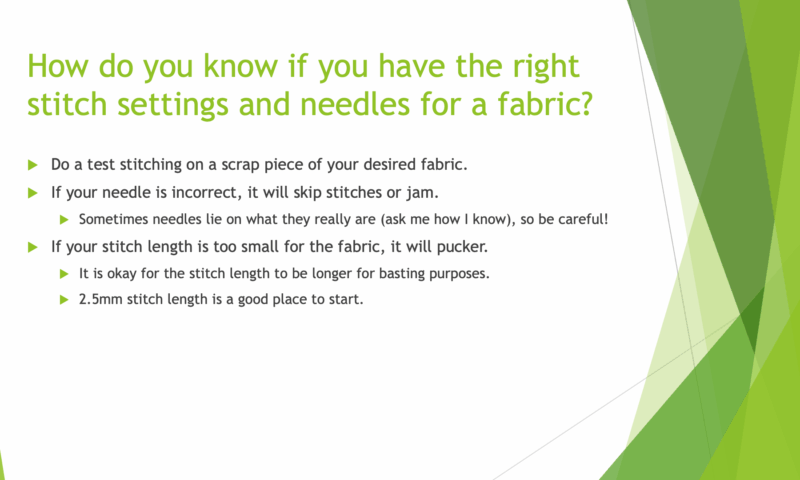 I keep mentioning this; sewing with the wrong needle is not a productive use of time. You cannot force a stitch with a bad or wrong needle.
I keep mentioning this; sewing with the wrong needle is not a productive use of time. You cannot force a stitch with a bad or wrong needle. Drape is a topic that warrants its own panel, but it is easy to go from high drape to low drape with underlining or laminating a low drape fabric under a high drape fabric.
Drape is a topic that warrants its own panel, but it is easy to go from high drape to low drape with underlining or laminating a low drape fabric under a high drape fabric.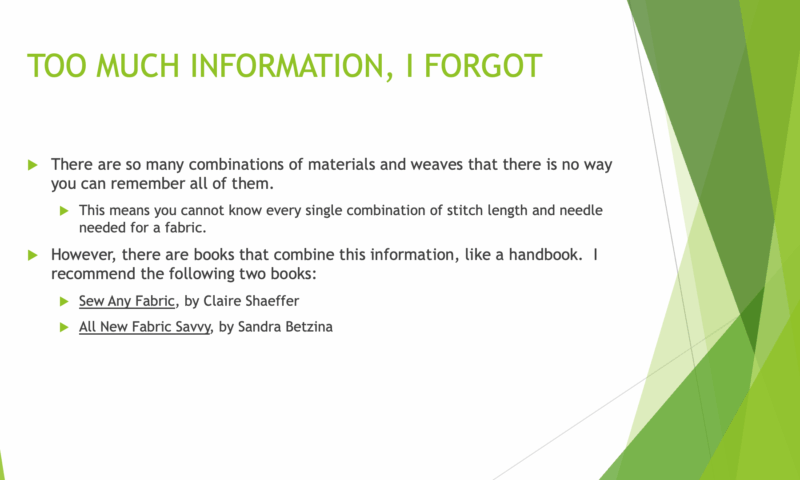 The two books I suggested are available at any reputable bookstore, and can be bought as ebooks for those of you who don't want to carry around books when you shop for fabric.
The two books I suggested are available at any reputable bookstore, and can be bought as ebooks for those of you who don't want to carry around books when you shop for fabric.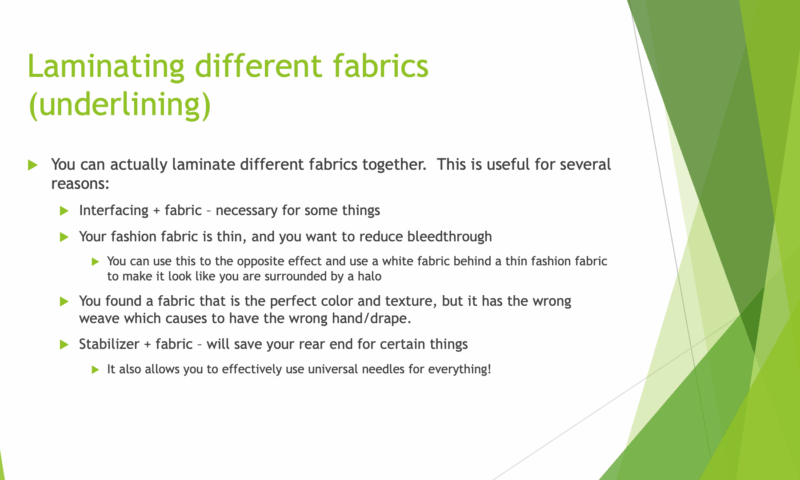 This technique is very powerful in transforming fabric; most folks use it in a mundane way with interfacing. However, done properly you can make any fabric act like any other fabric.
This technique is very powerful in transforming fabric; most folks use it in a mundane way with interfacing. However, done properly you can make any fabric act like any other fabric.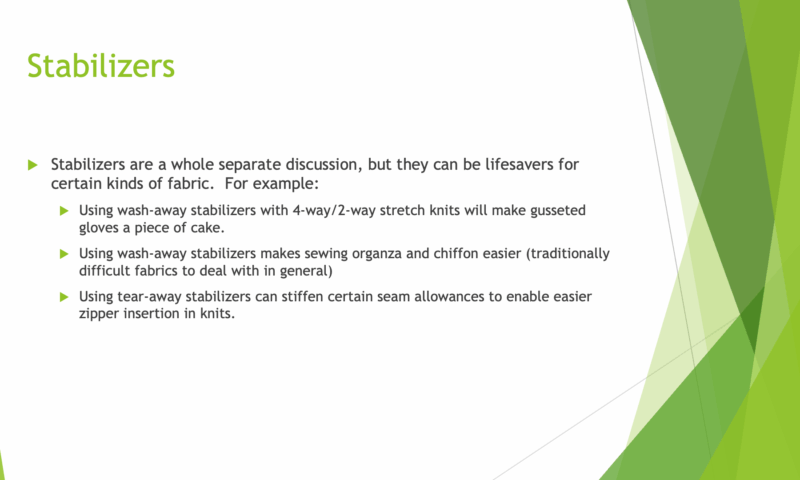 Again, I have a whole panel dedicated to stabilizers, but you don't really need a lot of it in general sewing unless if you are doing machine embroidery. Where you do need stabilizers will really help in making your sewing more enjoyable.
Again, I have a whole panel dedicated to stabilizers, but you don't really need a lot of it in general sewing unless if you are doing machine embroidery. Where you do need stabilizers will really help in making your sewing more enjoyable.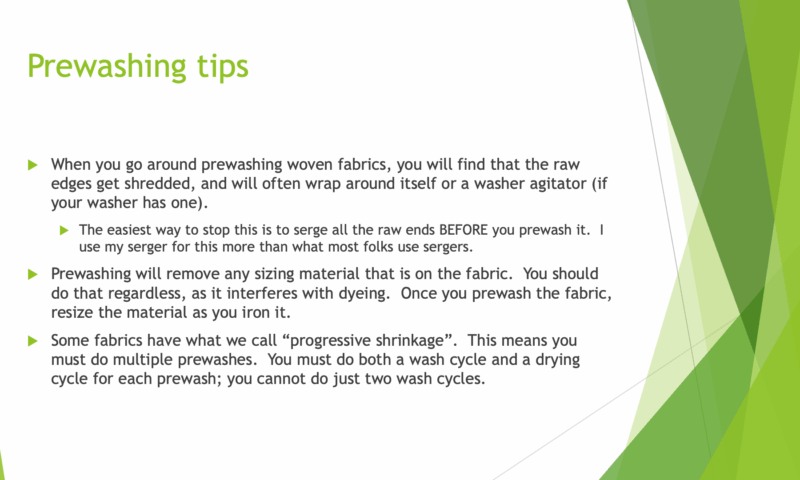 Serging the raw edge of purchased fabric before a prewash was a trick I got from Sandra Betzina's books.
Serging the raw edge of purchased fabric before a prewash was a trick I got from Sandra Betzina's books. Now that Joann's is no longer a thing, knowing how to buy fabric online with the help of low cost swatches becomes more important.
Now that Joann's is no longer a thing, knowing how to buy fabric online with the help of low cost swatches becomes more important.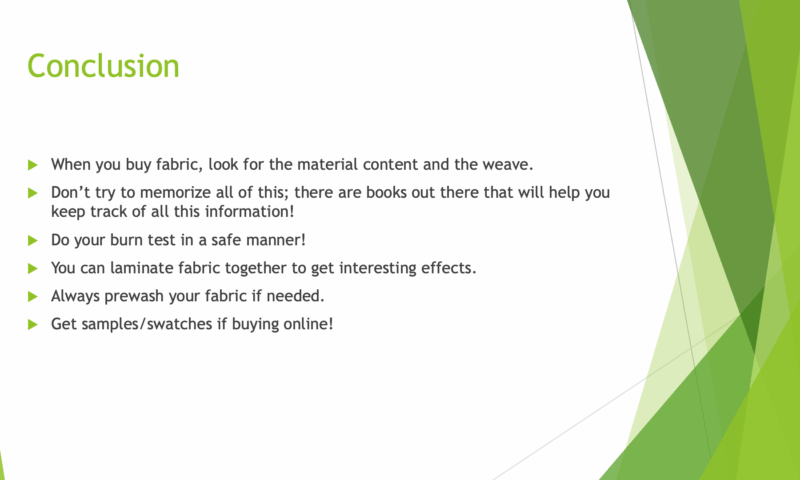 I covered a lot of information in this panel that might seem to be extremely technical, but I think the biggest thing to realize from this panel is that you can make any fabric act like any other fabric. That often will make purchasing fabrics easier.
I covered a lot of information in this panel that might seem to be extremely technical, but I think the biggest thing to realize from this panel is that you can make any fabric act like any other fabric. That often will make purchasing fabrics easier.
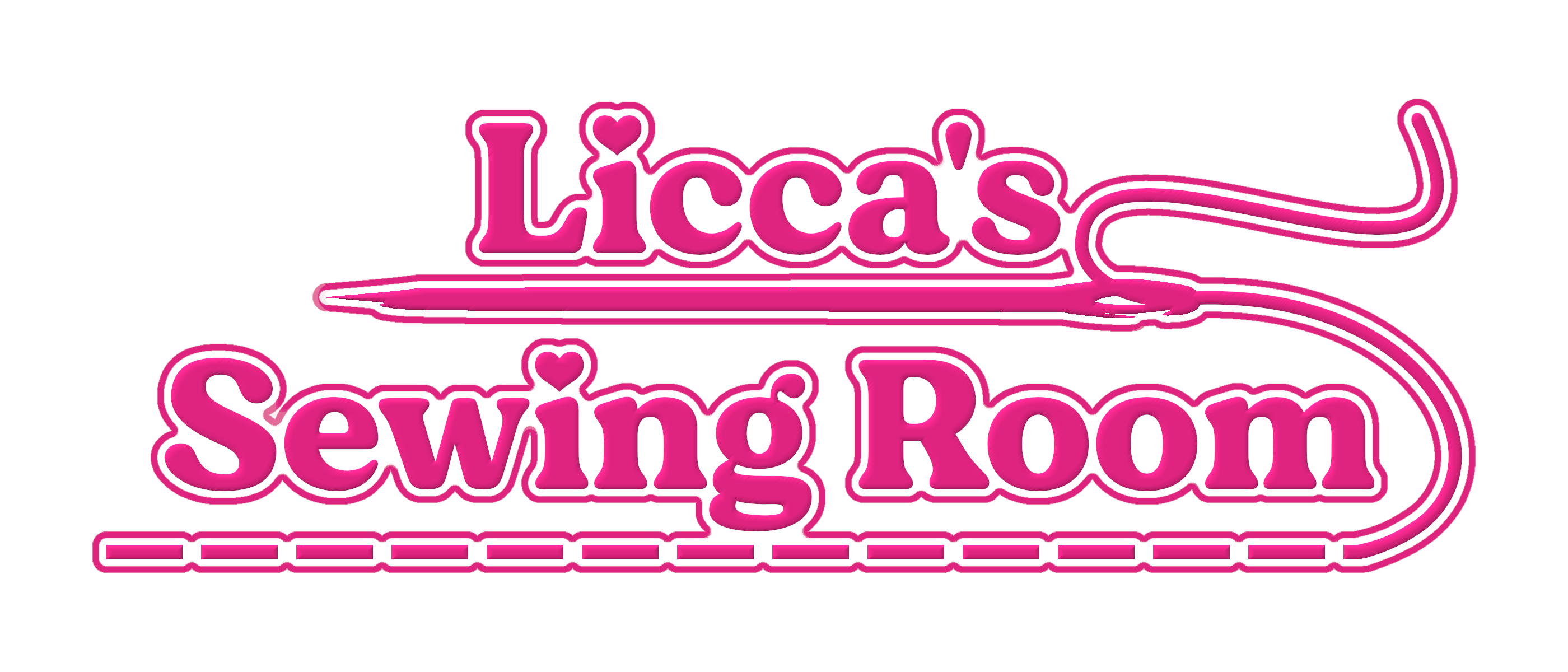
Leave a Reply